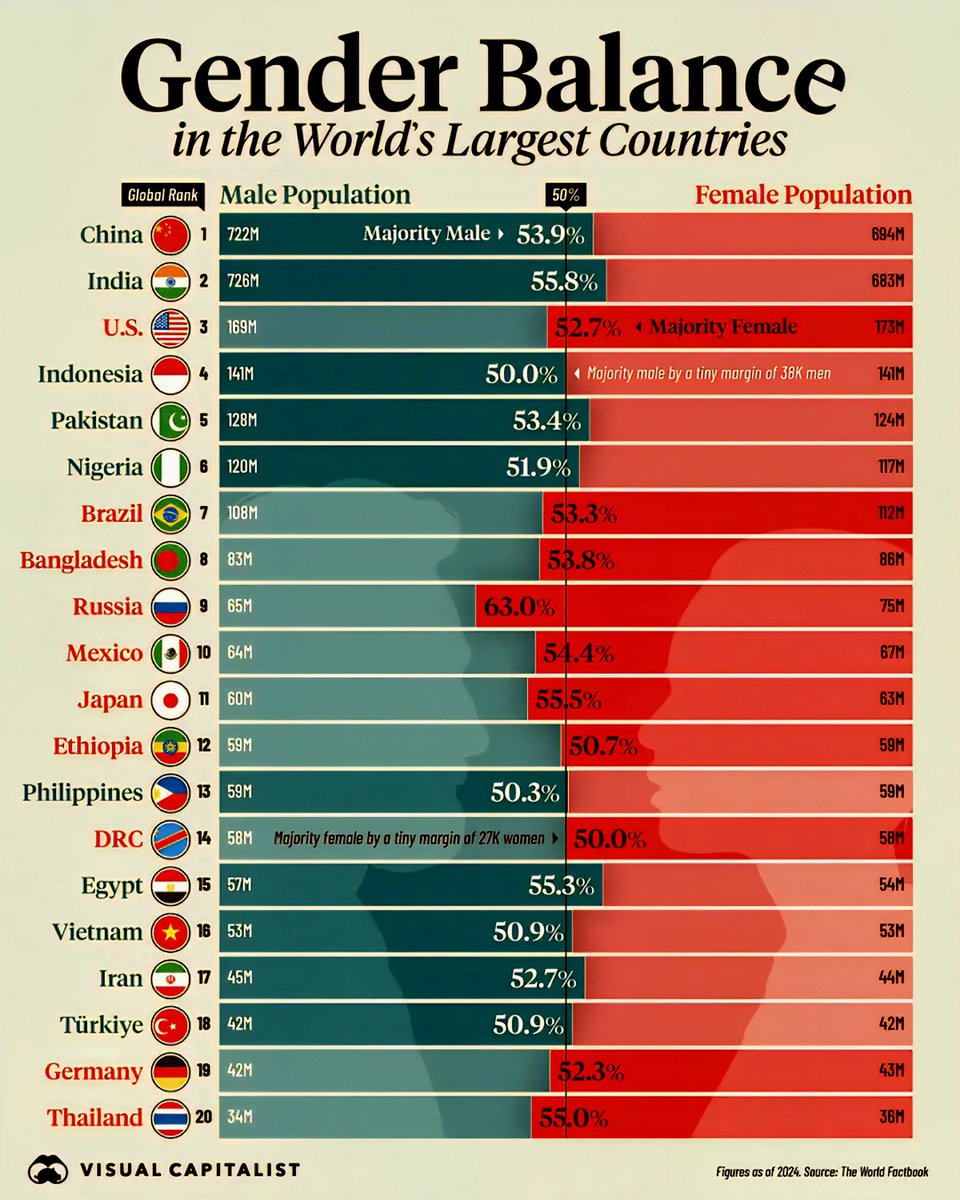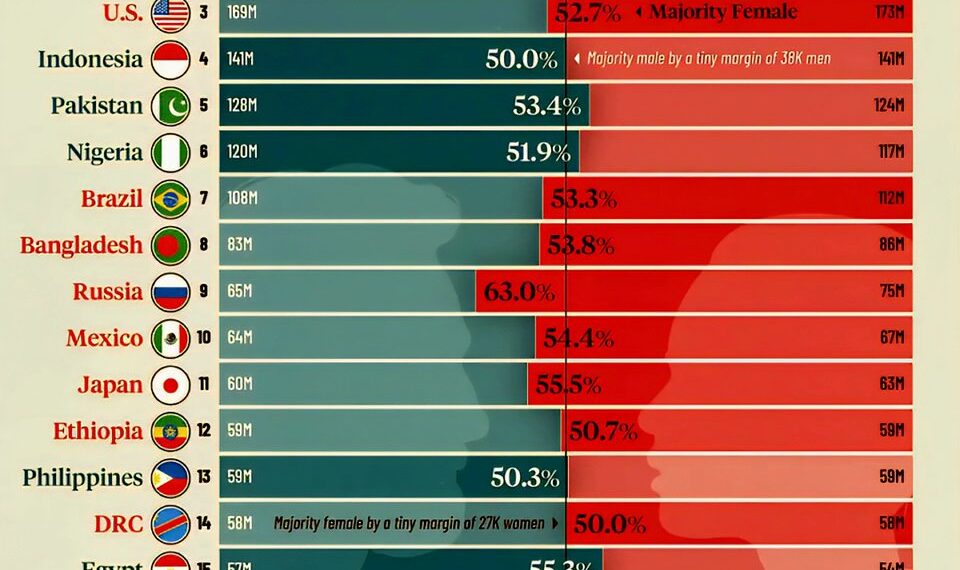Select Language:
Gender Balance in the World’s Largest Countries

1. The Rising Trend of Gender Parity in China
China, the most populous country in the world, has long grappled with gender imbalance issues, primarily due to traditional preferences for male offspring and the lingering effects of the one-child policy. However, recent data from 2025 show promising shifts toward gender equality. Urban areas are witnessing increased female participation in the workforce, and educational attainment among women has hit record highs. While imbalances still exist—particularly in rural regions where male-to-female ratios favor males—efforts by government campaigns are gradually narrowing this gap. Chinese women are also becoming more involved in leadership roles, with many breaking through the glass ceiling on local and national levels.
2. India’s Journey Toward Gender Equality
India, with its vast and diverse population, continues to face challenges related to gender disparities. Traditionally, societal norms often favored male children and limited women’s opportunities outside the household. Yet, in 2025, India is making steady progress. Women are increasingly enrolling in higher education, with the number of women in STEM fields rising sharply. The government’s focus on women’s rights and safety, along with national campaigns promoting gender equality, are starting to bear fruit. While rural areas still lag behind urban centers in gender representation, new policies aim to address these gaps by incentivizing female entrepreneurship and promoting women’s leadership.
3. The United States: A Leader in Gender Equality
The United States continues to stand out as one of the top countries striving for gender balance. In 2025, women occupy a record number of leadership positions across business, politics, and academia. The gender pay gap has narrowed significantly, with many industries implementing transparent pay practices. Movements advocating for sexual harassment prevention and reproductive rights remain vigorous. Despite these advances, disparities still persist in certain sectors and among minority women, prompting ongoing activism and policy reforms, ensuring that gender equality remains an evolving focus.
4. Russia’s Shifting Demographics
Russia faces a unique demographic challenge, with a slightly higher male population, mainly due to historical events such as wars and lifestyle factors. However, recent policies encouraging increased maternal health and female employment have resulted in some shifts. Growing urbanization has created more opportunities for women, especially in professional and political spheres. The gender ratio remains skewed, but efforts continue to promote equality in educational opportunities and workplace representation. In the political arena, there has been a rise in female legislators, indicating a potential gradual balance over the coming decade.
5. Brazil’s Gender Equity Campaigns
Brazil, with its vibrant culture and diverse population, has been actively working toward gender equity. In 2025, women are notably more engaged in decision-making processes, from business to government. Initiatives addressing violence against women and promoting equal pay have gained momentum. The country is also witnessing increased female entrepreneurship, with women leading startups across various sectors. Despite challenges posed by regional disparities, grassroots movements and social campaigns continue to push for more balanced gender representation and rights.
6. Growth of Gender Equality in Africa’s Largest Countries
Africa’s largest economies, Nigeria and Egypt, are experiencing rapid developments in gender representation. Nigeria has seen a surge in women’s participation in politics and education, driven by reforms and activism. Similarly, Egypt is making strides in girls’ education and women’s employment, especially in urban centers. Cultural shifts and international support have played crucial roles in challenging traditional gender norms. While progress in some rural areas remains slow, the overall trend points toward increased gender balance, with more women stepping into decision-making roles.
7. The Impact of Technology and Education
Across all these countries, advances in education and technology are instrumental in fostering gender equality. Access to online education platforms and digital tools is empowering women and girls, especially in rural or underserved regions. Telecommuting and flexible work arrangements are helping to balance work and family life. Governments and organizations are investing heavily in training programs aimed at eliminating gender biases and increasing female participation in STEM careers. Such initiatives are vital for sustaining progress toward gender equality in the world’s largest nations.
8. Future Outlook: Breaking Barriers Further
While some countries are closer than others to achieving full gender parity, the global trajectory in 2025 indicates a positive movement toward more balanced societies. Persistent efforts in policy reform, cultural shifts, and educational empowerment are key drivers. Experts believe that as more women enter leadership roles and challenge stereotypes, the world will move closer to genuine gender equality, fostering more inclusive and resilient societies.
Note: Data and developments mentioned are current as of 2025, reflecting recent trends and policies aimed at promoting gender balance worldwide.






